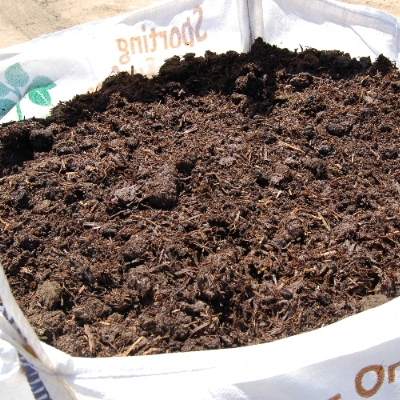Allotment Maintenance
Adding Organic Matter in the Autumn
Late summer is probably the busiest time of year for vegetable growers, as everything seems to need harvesting at once, and the weeds are growing faster than you can remove them. It seems that your whole life is picking, cutting, digging and weeding, and then back home to freeze, or make jam and chutney. But now is also the time to think about what you need to do once all the picking is done, and particularly, get organised about how you’re going to add organic matter to improve the soil structure.
Whatever your soil structure, there is very little doubt that it will be improved by adding some organic matter. Whether it’s sandy, and needs to be bulked up, or clay, which needs to be broken down a bit, organic matter will help. And adding organic matter in the autumn is good, because it has a chance to rot into the soil over the winter, and make sure that it’s ready for planting come spring. But what should you add?
Many people swear by farmyard manure, and if you’re lucky enough to have farms or stables nearby, it’s certainly a good source of organic matter. If you go and collect it yourself, you may even find they’d love you to take it away, and don’t charge anything. Make sure that the manure is well-rotted; you don’t want green manure on your vegetable patch, as it could scorch your vegetables, even after a winter of rotting.
 An alternative, if you don’t have ready access to farmyard or stable manure, is to buy compost from compost suppliers. Mushroom compost, which is well-rotted straw and animal waste that has been used to grow mushrooms and then sterilised, is a good option. Alternatively mushroom and manure compost, which is mushroom compost with added animal waste, is also excellent . Both have high levels of organic matter, and may be even better than farmyard manure, as they will have been sterilised, so you know you won’t be importing any ‘nasties’ into your plot.
An alternative, if you don’t have ready access to farmyard or stable manure, is to buy compost from compost suppliers. Mushroom compost, which is well-rotted straw and animal waste that has been used to grow mushrooms and then sterilised, is a good option. Alternatively mushroom and manure compost, which is mushroom compost with added animal waste, is also excellent . Both have high levels of organic matter, and may be even better than farmyard manure, as they will have been sterilised, so you know you won’t be importing any ‘nasties’ into your plot.
And how to apply it? Spread it evenly over your vegetable patch, to whatever thickness you can manage, depending on how much you’ve got. If you’re really feeling energetic, you can dig it in, by turning over the soil to a spade’s depth, but it’s not strictly necessary, as it will rot in anyway over the winter. If you have plants still in place, such as brassicas, spread the best rotted stuff around them, or leave it until spring if you are at all worried.
You can add more organic matter in spring, but if you don’t have time, at least you know that you have ensured that your soil is improving.